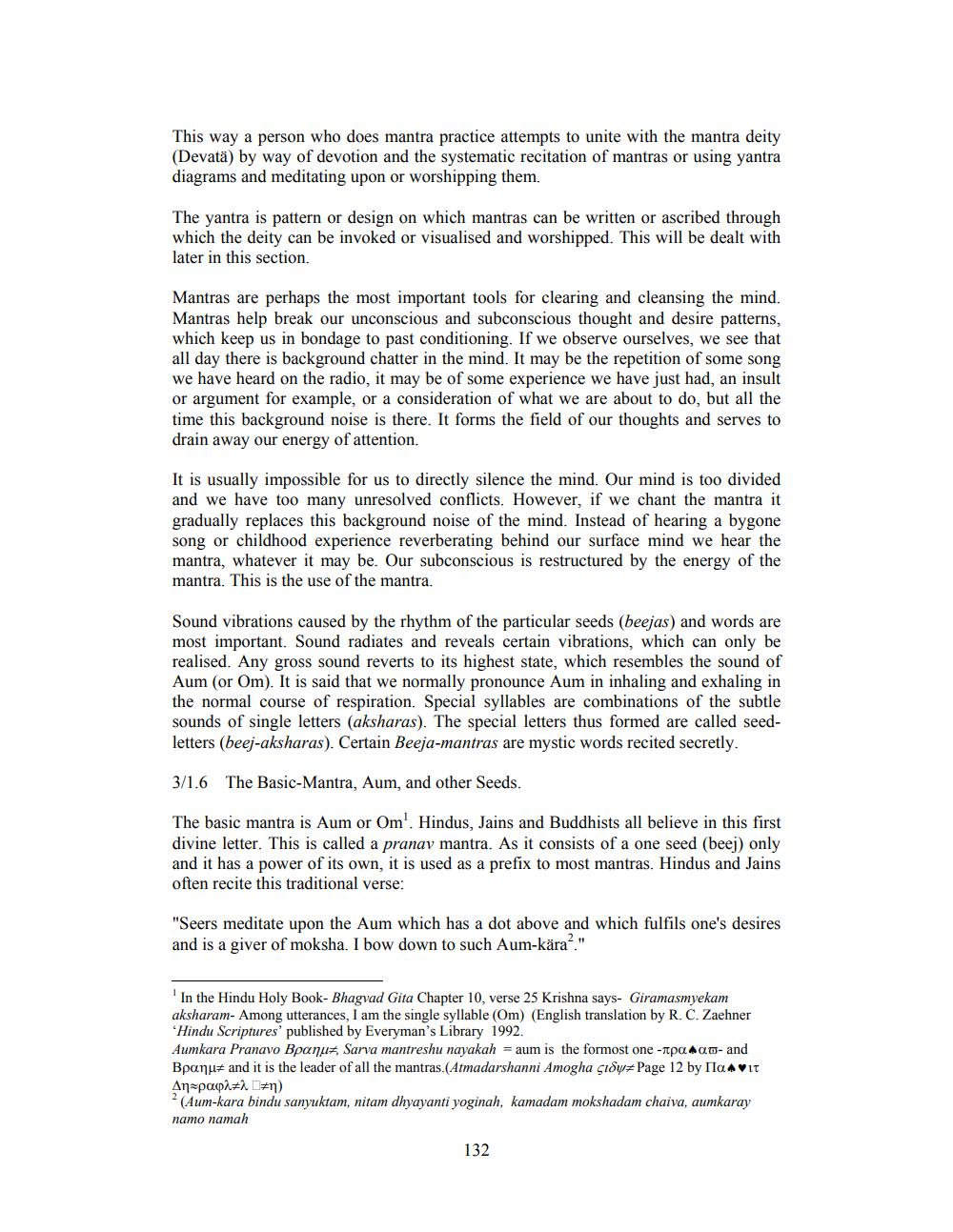________________
This way a person who does mantra practice attempts to unite with the mantra deity (Devata) by way of devotion and the systematic recitation of mantras or using yantra diagrams and meditating upon or worshipping them.
The yantra is pattern or design on which mantras can be written or ascribed through which the deity can be invoked or visualised and worshipped. This will be dealt with later in this section.
Mantras are perhaps the most important tools for clearing and cleansing the mind. Mantras help break our unconscious and subconscious thought and desire patterns, which keep us in bondage to past conditioning. If we observe ourselves, we see that all day there is background chatter in the mind. It may be the repetition of some song we have heard on the radio, it may be of some experience we have just had, an insult or argument for example, or a consideration of what we are about to do, but all the time this background noise is there. It forms the field of our thoughts and serves to drain away our energy of attention.
It is usually impossible for us to directly silence the mind. Our mind is too divided and we have too many unresolved conflicts. However, if we chant the mantra it gradually replaces this background noise of the mind. Instead of hearing a bygone song or childhood experience reverberating behind our surface mind we hear the mantra, whatever it may be. Our subconscious is restructured by the energy of the mantra. This is the use of the mantra.
Sound vibrations caused by the rhythm of the particular seeds (beejas) and words are most important. Sound radiates and reveals certain vibrations, which can only be realised. Any gross sound reverts to its highest state, which resembles the sound of Aum (or Om). It is said that we normally pronounce Aum in inhaling and exhaling in the normal course of respiration. Special syllables are combinations of the subtle sounds of single letters (aksharas). The special letters thus formed are called seedletters (beef-aksharas). Certain Beeja-mantras are mystic words recited secretly.
3/1.6 The Basic-Mantra, Aum, and other Seeds.
The basic mantra is Aum or Om'. Hindus, Jains and Buddhists all believe in this first divine letter. This is called a pranav mantra. As it consists of a one seed (beej) only and it has a power of its own, it is used as a prefix to most mantras. Hindus and Jains often recite this traditional verse:
"Seers meditate upon the Aum which has a dot above and which fulfils one's desires and is a giver of moksha. I bow down to such Aum-kära2."
In the Hindu Holy Book- Bhagvad Gita Chapter 10, verse 25 Krishna says- Giramasmyekam aksharam- Among utterances, I am the single syllable (Om) (English translation by R. C. Zaehner 'Hindu Scriptures' published by Everyman's Library 1992.
Aumkara Pranavo Bpanuz, Sarva mantreshu nayakah = aum is the formost onе -лраα- and Bpanu and it is the leader of all the mantras. (Atmadarshanni Amogha çidyz Page 12 by Пa♥IT Δη=ραφλ#λ #η)
2(Aum-kara bindu sanyuktam, nitam dhyayanti yoginah, kamadam mokshadam chaiva, aumkaray namo namah
132




